Leaving behind traditional rock 'n roll structures for more experimental avenues is nothing new for post-rock bands stretching back to The Velvet Underground drones or Brian Eno's ambient albums. It's stretches boundaries into free jazz, krautrock, math rock, and more often with a mechanical feel. That is quite the opposite of what the Dirty Three accomplish on their 1996 album Horse Stories, filled with the improvisations of Warren Ellis on violin, Mick Turners on guitars and bass, and Jim White on drum. The three-piece creates a wide cinematic scope, using space and slow building dynamics to evoke European folk ballads, traditional blues, classical music and much more.
Songs In This Episode
Support the podcast, join the DMO UNION at Patreon.
Listen to the episode archive at DigMeOutPodcast.com.
Subscribe on Apple Podcasts
Subscribe on Spotify
Highlights
(00:15) Tim and Jay kick off the episode by acknowledging the support from their Dig Me Out Union on Patreon and hint at the episode's content.
(00:41) They discuss their longest-running Union member, Gavin Reed, who is known for bringing a variety of albums to the show, particularly from Australian artists.
(01:46) Gavin joins the conversation, joking with Tim and Jay about the authenticity of Outback Steakhouse as an Australian establishment.
(02:56) Gavin reveals his third album pick for the year, "Horse Stories" by the Dirty Three, and ponders the band's recognition in the United States.
(03:48) Jay shares his previous misconception about the Dirty Three's music, while Tim recalls the album artwork from his time at a radio station.
(05:13) Gavin explains how Warren Ellis of the Dirty Three became a full-time member of Nick Cave's band and their subsequent collaborative work on various film scores.
(07:30) Gavin details the formation of the Dirty Three, their early music releases, and how they landed a U.S. record deal with Touch and Go Records.
(09:44) Gavin continues to discuss Warren Ellis's extensive career, including his contributions to film scores and collaborations with various artists beyond the Dirty Three.
(11:13) Gavin adds more about the Dirty Three's connection to Nick Cave, including Cave's impromptu piano performances with the band and the band's origin story related to playing in a Melbourne bar.
(13:04) Jay reads a quote about the impact of the Dirty Three's music on creativity, mentioning the book "The 100 Best Australian Albums" where the band was featured.
(13:49) Tim and Jay discuss comments from their Patreon page regarding the Dirty Three's album "Horse Stories," with mixed opinions from listeners.
(14:53) Jay expresses his fascination with the unique sound of the Dirty Three, emphasizing the distinctive way the band members play together and the deconstruction of their songs.
(18:00) Jay continues to describe the album's balance between beauty and chaos, noting the violin's significant role in creating tension within the music.
(20:37) Tim shares his initial expectations of the album and his pleasant surprise at its quality, highlighting the emotive power of Warren Ellis's violin.
(23:53) Tim finds it interesting that the album includes a cover of a Greek song, which seamlessly fits into the overall sound of the record.
(25:18) Gavin, having seen the Dirty Three perform live multiple times, describes the live experience of the "Horse Stories" album as true to the recorded version but with more chaos and volume.
(26:11) Gavin explains what works for him on the record, appreciating its uniqueness and the difficulty in categorizing its genre, acknowledging the jazz elements and the overall noise rock feel.
26:56) Gavin expresses his appreciation for the album's uniqueness, noting that it's hard to compare it to anything else, possibly only to Grinderman due to some similarities in sound.
(27:26) He describes the music of the Dirty Three as a juxtaposition of chaos and beauty, comparing the beautiful parts to sunsets and the chaotic parts to nuclear explosions.
(28:58) Gavin values music that allows for personal interpretation and shares an example of a short film on YouTube that uses the song "Sue's Last Ride" from the album as a backdrop, illustrating a story of a young woman's issues with her father.
(30:00) He also shares his own interpretation of the song as a soundtrack to a Quentin Tarantino Western, picturing a duel in the midst of a sunrise.
(31:05) Gavin mentions that his son doesn't enjoy the album, and he acknowledges that "Horse Stories" is an outlier for the Dirty Three, being their most chaotic album, reflecting their intense touring and frequent performances.
(32:07) He praises the album for its ability to remain interesting and different with each listen, and struggles to find a direct comparison for their sound, though he notes some similarities to early Sonic Youth and Velvet Underground.
(33:04) Jay points out the technical ability of the band, appreciating their choice to play in a unique style that allows for both technical proficiency and emotional expression within the same song.
(34:28) Tim agrees that the decision to go purely instrumental was the right move for the Dirty Three, and compares their emotive and weird music to the work of Trent Reznor, albeit in a different format.
(35:00) Gavin concludes that the album may not be immediately accessible, but once it clicks, it no longer seems weird and makes complete sense to those who like it.
(36:52) Jay shares that the album is a stressful listen for him, as it demands engagement and can't be passively experienced without causing agitation.
(38:25) Jay discusses the demanding nature of the Dirty Three's music, which refuses to be ignored and compels the listener's full attention.
(39:02) Jay and Tim talk about the difficulty of passively listening to the album, as it requires active engagement to be fully appreciated.
(39:17) Tim suggests that the album isn't one to be divided into single tracks for casual listening but is meant to be experienced as a whole.
(39:30) Tim finds the album to be good writing music, particularly for creative writing, as it evokes a wide range of emotions without being distracting.
(40:31) Jay and Tim discuss the challenges of listening to the album while performing tasks that require focused attention, as the music tends to induce creative thought.
(40:42) Tim compares the experience of listening to the album with headphones to engaging with intense, traditional music from other cultures, like Indian Raga.
(41:39) Gavin admits that while he loves the album, its intense and demanding nature makes it difficult to find appropriate situations to listen to it as often as he'd like.
(42:53) Gavin praises the album's unique qualities, even though they may not be universally appreciated, and jokes about feeling intellectually superior for understanding it.
(43:33) Jay reflects on the niche appeal of the album, suggesting that only a small fraction of people have heard it, and even fewer have enjoyed it due to its specificity.
(44:55) Gavin expresses regret for not having attended a Dirty Three concert when he had the chance, now that he has a deeper appreciation for their music.
(45:34) The group discusses why the album "Horse Stories" didn't achieve mainstream success, acknowledging that its experimental nature was not suited for radio play.
(46:23) Jay and Tim give their final ratings on the album, with both agreeing that it is a "worthy album" despite, or perhaps because of, the effort required to fully appreciate it.
(49:42) Tim reflects on the process of song creation in bands, contrasting the typical approach with the Dirty Three's more organic and performance-driven songwriting.
(50:00) Gavin agrees with Tim's assessment, adding that the Dirty Three's first few albums were written as they performed, which contributed to the raw and unrefined sound of their music.
(50:29) Gavin notes that the band's fourth album was the first to be created in the studio, which may explain its presence at Tim's radio station, and mentions that Steve Albini produced albums for the band after "Horse Stories."
(50:45) Tim recognizes Mick Turner, one of the band members, as the artist behind the album's artwork, which Gavin confirms, adding that even the artwork has a tense and ambiguous nature.
(51:20) Jay and Gavin discuss the album cover's imagery, speculating about the story it tells and its connection to the album's title, "Horse Stories."
(51:33) Tim reveals the results of a vote, with 67% considering the album "worthy" and 33% opting for "decent single," highlighting the polarizing nature of the record.
(52:02) Jay jokes about the potential reaction if there had been an option to label Gavin's music taste in the poll, suggesting that opinions on the album are strongly divided.
(52:29) Jay and Tim discuss the album's suitability for social gatherings, agreeing that it's not the kind of music to play at a party due to its intense and potentially mood-altering nature.
(53:01) Gavin acknowledges the challenging nature of the Dirty Three's music and appreciates the opportunity to introduce Tim and Jay to something outside their usual listening habits.
(53:48) Tim and Jay thank Gavin for being a dedicated member of the Dig Me Out Union and suggest commemorating his contributions with a metaphorical plaque.
(54:14) The conversation shifts to a light-hearted discussion about the cultural significance of displaying flags at home, with Gavin noting that in Australia, it's often a sign of problematic nationalism.
(55:32) Gavin brings up a recent referendum in Australia regarding the indigenous population's representation in Parliament, expressing disappointment at the negative outcome.
(56:21) The group briefly touches on political issues, including gerrymandering and representation, before steering back to the topic of music.
(56:28) Tim invites listeners to join the Dig Me Out Union, participate in polls, and access exclusive content.
(57:42) The episode concludes with Tim and Jay wrapping up and teasing the content for the next episode.


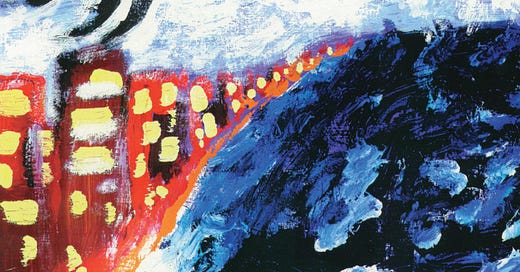
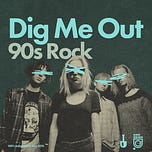







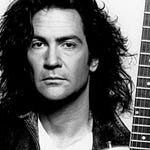
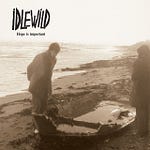
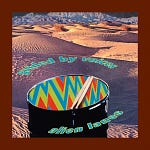
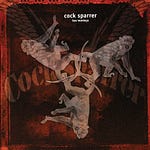
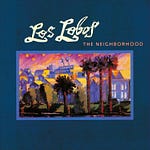


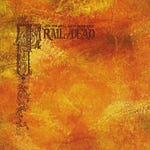
Share this post